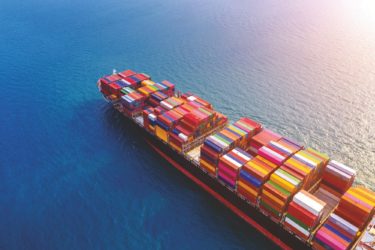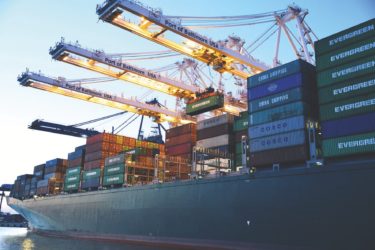
Maersk and MSC are ending the 2M global shipping alliance. The pact will conclude in 2025. A.P. Moeller-Maersk and Mediterranean Shipping Co., the creators of the 2M alliance, are ranked the world’s two largest shipping lines. They would end their vessel-sharing partnership as the industry faces reduced demand and lower freight rates.
2M Global Shipping Alliance
- 2M is a container shipping line vessel-sharing agreement (VSA)
- It was introduced in 2015 by Maersk and MSC with the aim of ensuring competitive and cost-efficient operations in the Asia-Europe, Transatlantic, and Transpacific trades.
- The 2M agreement has a minimum term of 10 years with a 2-year notice period of termination.
Reasons for the End of the Alliance
The decision to wind down the 2M alliance comes as shipowners are dealing with
- A drop in cargo and excess vessel capacity has pushed freight rates to pre-pandemic levels. According to operators and charterers, container volumes across the Pacific are down about 30% in January compared with last year.
- Shift of balance of power back to customers of these alliances. Customers had complained to regulators the
alliances were anti-competitive. Big cargo owners such as Amazon.com Inc. and Target Corp. are securing ocean freight rates about one-third less than last year’s contracts. - Retailers not securing a spot-on vessel: Retailers that import large volumes of goods typically sign fixed-term
contracts with ocean shippers to avoid uncertainty in deliveries, and they are not doing this anymore. Some importers are now opting to pay market rates instead of securing fixed-term contracts. - Changes in the retail scenario: Retailers have scaled back imports. The sales during the holiday season have become weak. Apart from this, they have to deal with bloated inventories.
- Return of pre-pandemic days: Ocean freight has normalized, and the ports have normalized. Most in-transit issues and all the penalties have also been reduced. The retailer’s chief operating officer, John Mulligan, of Target, said in November that container rates had come down by one-third and that they would come down further.
- Looming uncertainties: The uncertainty has cut down the duration of fixed-rate contracts. Shipowners are offering from one year to as short as three months contracts. Pricing will be under pressure for shipowners this year, while cargo owners are getting discounted rates.
“It’s very unpredictable for our customers and us,” Maersk CEO Vincent Clerc said in a December interview. “We made significant capacity adjustments, but the inventory corrections can take a few months.

Future of the Alliance Partners
The 2M alliance had established a behemoth in the industry when it was created in 2015. Maersk and MSC can each independently move over 4 million TEUs through a combination of owned and chartered ships, according to Alphaliner data. 2M was instrumental in stabilizing the fragmented container market.
Following the creation of 2M, similar partnerships were formed- the Ocean Alliance and THE Alliance. The three groups account for about 75% of global container – shipping capacity, according to data company Statista. The winding down of 2M has raised questions about the future of the other two alliances.
As for Maersk and MSC, terminating the agreement will allow both companies to continue to pursue their strategies. Maersk has been focusing on becoming an end-to-end logistics operator with an emphasis on inland supply services, while MSC has overtaken Maersk in the number of ships it operates, sharply building up its fleet. MSC now has the scale to service all its customers on its own.
“Even if 2M formally runs until January 2025, it should be expected that Maersk’s and MSC’s networks on the alliance trades will begin to deviate even more in 2023,” said Lars Jensen, CEO of Denmark-based Vespucci Maritime.
In a joint statement, CEO Vincent Clerc of A. P. Moller – Maersk and CEO Soren Toft of MSC said: “MSC and Maersk recognize that much has changed since the two companies signed the 10-year agreement in 2015. Discontinuing the 2M alliance paves the way for both companies to continue to pursue their individual strategies. The companies acknowledged the commercial environment that led to the union in 2015 has changed — particularly as the carriers pursue new strategies.
Their alliance, however had defined the market for nearly a decade.